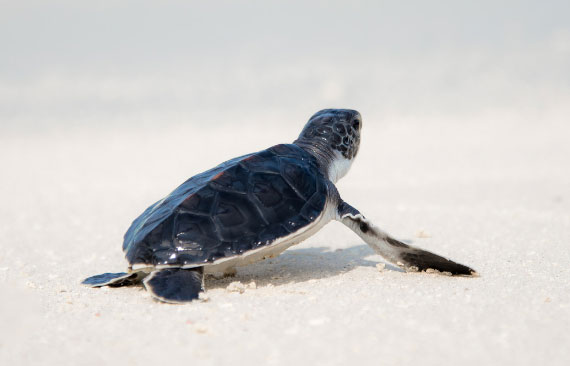Where Do Turtles Go in the Winter?
As winter approaches, you might wonder about the fate of turtles. Where do these enigmatic reptiles go when temperatures drop? Understanding turtle hibernation habits isn’t just fascinating; it’s vital for turtle enthusiasts and pet owners. This article aims to unravel the mysteries behind turtle winter behavior and provide practical tips for pet turtle care during the colder months.

Do Turtles Hibernate in the Winter?
Hibernate refers to a state of dormancy that some animals, especially mammals, enter during winter to conserve energy. In this state, their metabolic processes slow down, allowing them to survive for long periods without food.
Turtles don’t hibernate in the traditional sense like mammals do, but instead, enter a state called brumation during the winter. This process allows them to slow their metabolism and conserve energy when temperatures drop. Unlike true hibernation, where animals are completely inactive, turtles in brumation can still move occasionally, although their bodily functions slow down significantly.
Where Do Turtles Go in the Winter?
Finding refuge is crucial for survival. Turtles carefully select their winter hideouts, ensuring they remain safe from the elements and predators.

Underwater: Many turtles retreat to the bottoms of ponds or lakes. The water’s insulating properties protect them from freezing.
Mud and Silt: Some bury themselves in mud or silt at the bottom of water bodies. This provides additional insulation against the cold.
Forest Floors: Woodland turtles may dig into leaf litter or soil. This offers protection from cold air temperatures.
Man-made Structures: Occasionally, turtles find refuge in human-made structures like basements or crawl spaces.
Natural Cavities: Cavities in tree roots or fallen logs serve as excellent shelters.
Rock Crevices: Rocks provide a stable environment, protecting turtles from predators and temperature fluctuations.
Wetlands: Freshwater turtles may nest in wetlands, where vegetation offers cover and insulation.
Coastal Zones: Marine turtles hibernate in warmer waters. They may travel long distances to find suitable environments.
How to Help Your Pet Turtle Prepare for Winter?
Ensuring your pet turtle safely navigates winter requires preparation. Implement these strategies to help your shelled friend brumate successfully.
1. Habitat Assessment: Examine their living conditions. Ensure the enclosure is draft-free and maintains a stable temperature.
2.Temperature Monitoring: Gradually lower the temperature mimicking natural seasonal changes. Use thermostats for precise control.
3.Provide a Hideaway: Offer a burrowing box with a suitable substrate, like moss or soil, to create an ideal brumation spot.
4. Hydration Check: Turtles must stay hydrated before brumation. Provide fresh water and monitor their drinking habits.
5. Health Check: Visit a veterinarian for a health check-up. Ensure the turtle is free from illnesses that could affect brumation.
6. Diet Adjustments: Gradually reduce food intake leading up to winter. Aim to make sure the turtle stops eating a few weeks before brumation begins.
7. Monitor Activity: Keep an eye on activity levels. Increased lethargy signals the beginning of brumation.
8. Safety Precautions: Shield the brumation area from disturbances. Avoid unnecessary handling during this fragile period.
Conclusion
Understanding where turtles go in the winter and how they survive brumation is fundamental for their care and conservation. Whether you admire wild turtles or own a pet one, knowing their behaviors and needs can enhance their well-being. With the right knowledge, you can ensure that these fascinating reptiles navigate the winter safely and come out thriving in the spring.
FAQ
Can turtles survive being frozen?
No, turtles cannot survive if they are completely frozen. However, they can endure near-freezing temperatures due to their unique adaptations, like reduced blood flow and increased glucose levels.
Can turtles live in a pond during winter?
Yes, many turtles can live in a pond during winter. They typically burrow into the mud at the bottom, where the water is unlikely to freeze solid and provides insulation from the cold.
What do snapping turtles do in the winter?
Snapping turtles usually burrow into mud or silt at the bottom of ponds or slow-moving rivers. This environment provides protection from extreme cold and predation, allowing them to brumate successfully.
